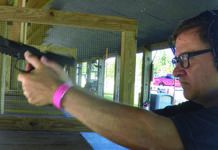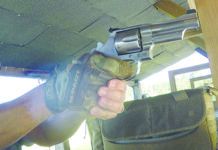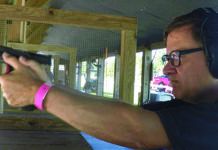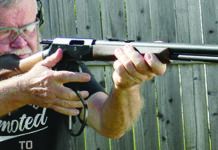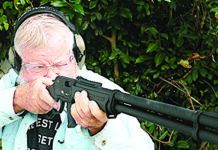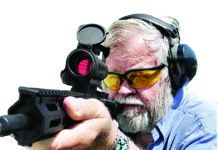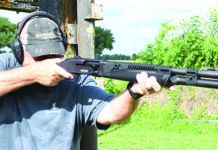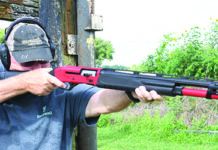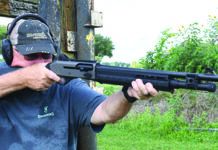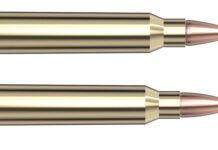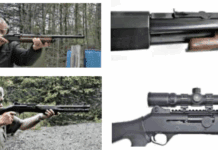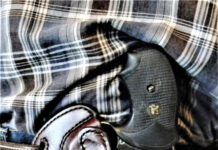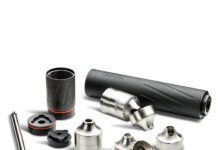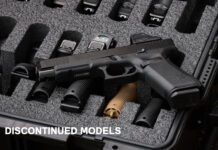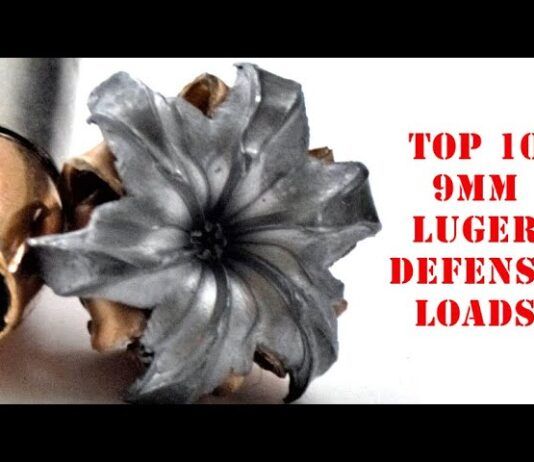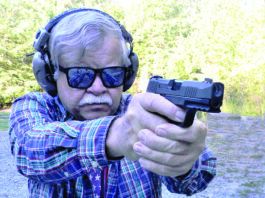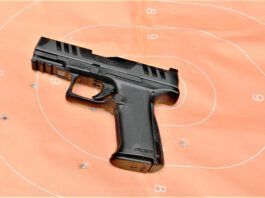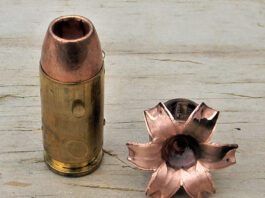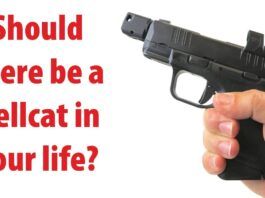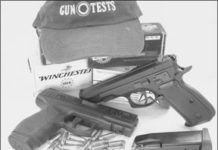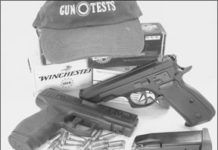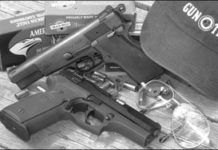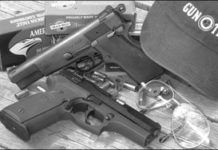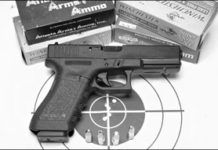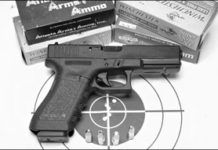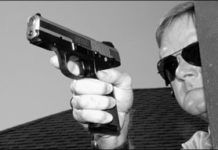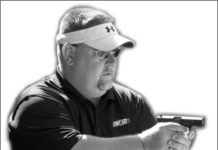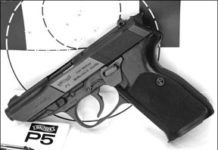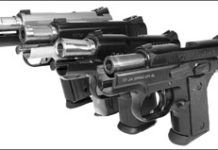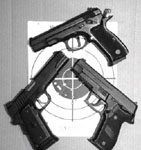A Brace of Full-Size 9mms: Go With CZs 75 B Single Action
A Brace of Full-Size 9mms: Go With CZs 75 B Single Action
9mm Semi Shootout: DA or SA? We Like Stoegers Cougar 8000
9mm Semi Shootout: DA or SA? We Like Stoegers Cougar 8000
Full-Time-Double-Action 9mms: We Like SIG Sauer, H&K, Glock
In this test we shot three double-action-only pistols designed for duty or personal self defense. Medium to large in size, they carry few levers, and this snag-free characteristic also makes them attractive for concealed carry. Two of the three guns, the $879 Heckler & Koch P2000 LEM V2 and Sig Sauer's $749 P250 Two-Tone, utilize a hammer and firing pin for ignition. The $599 Glock G17, arguably the gun that started the polymer DAO revolution, relies on the preparation and release of a striker to impact the primer. Despite any similarities between the guns, this test challenged us to master vastly different trigger techniques.
We began our tests from the 25-yard line supported by bench and sandbag. What better way to learn a trigger than limiting variables to grip, sight alignment, and a controlled press? We then added a second test. This would require landing rapid-fire hits on an 8.5-by-16-inch target from a distance of 5 yards, two shots at a time. Our shooter began each string of fire standing unsupported with a two-handed grip and sights on target but with finger off the trigger. We pasted a black 1-inch-wide dot in the center to provide a point of aim. Upon audible start signal from our CED electronic timer, we engaged the target as quickly as possible. Given that each stroke of the trigger both prepared and released the striking mechanism, we wanted to know how quickly and accurately we could land two hits on target one after another. We fired ten pairs and looked for a total of 20 hits on target. This test was performed twice. The second time we concentrated on applying what we learned from the first run. The rapid-fire test was performed firing one of our favorite practice rounds, Black Hills' 115-grain FMJ ammunition sold in blue 50-round boxes. From the benches we tried Winchester's new 105-grain jacketed softpoint Super Clean NT (nontoxic) ammunition; 124-grain full-metal-jacket rounds by Winchester USA, and 147-grain Subsonic jacketed hollow point Match rounds by Atlanta Arms and Ammo. Here is what we learned.
Full-Time-Double-Action 9mms: We Like SIG Sauer, H&K, Glock
In this test we shot three double-action-only pistols designed for duty or personal self defense. Medium to large in size, they carry few levers, and this snag-free characteristic also makes them attractive for concealed carry. Two of the three guns, the $879 Heckler & Koch P2000 LEM V2 and Sig Sauer's $749 P250 Two-Tone, utilize a hammer and firing pin for ignition. The $599 Glock G17, arguably the gun that started the polymer DAO revolution, relies on the preparation and release of a striker to impact the primer. Despite any similarities between the guns, this test challenged us to master vastly different trigger techniques.
We began our tests from the 25-yard line supported by bench and sandbag. What better way to learn a trigger than limiting variables to grip, sight alignment, and a controlled press? We then added a second test. This would require landing rapid-fire hits on an 8.5-by-16-inch target from a distance of 5 yards, two shots at a time. Our shooter began each string of fire standing unsupported with a two-handed grip and sights on target but with finger off the trigger. We pasted a black 1-inch-wide dot in the center to provide a point of aim. Upon audible start signal from our CED electronic timer, we engaged the target as quickly as possible. Given that each stroke of the trigger both prepared and released the striking mechanism, we wanted to know how quickly and accurately we could land two hits on target one after another. We fired ten pairs and looked for a total of 20 hits on target. This test was performed twice. The second time we concentrated on applying what we learned from the first run. The rapid-fire test was performed firing one of our favorite practice rounds, Black Hills' 115-grain FMJ ammunition sold in blue 50-round boxes. From the benches we tried Winchester's new 105-grain jacketed softpoint Super Clean NT (nontoxic) ammunition; 124-grain full-metal-jacket rounds by Winchester USA, and 147-grain Subsonic jacketed hollow point Match rounds by Atlanta Arms and Ammo. Here is what we learned.
9mm Polymer Pistols: Rugers SR9 Is Good, But Not Great
9mm Self-Defense Autoloaders: CZs Rami 2075 P Is a Bargain
Shooters like 9mm pistols for many reasons, chief among them being their reputation for manageable recoil with at least minimum acceptable stopping power for a self-defense cartridge. Also, 9mm guns can be made small and flat, which makes them suitable for comfortable concealed carry.
We recently bought a trio of such guns at Fountain Firearms in Houston (www.fountainfirearms.com, 281-561-8447). They were of relatively similar size, but different in almost every other way—and these differences made an impression on our testers that affected how we graded the pistols.
Vintage 9mms: Walther’s P5 Outclasses SigArms and Astra
9mm Sub-Compacts: Sigarms P239 DAK Earns A-Minus Grade
Pocket 9mm Concealables: Springfield, Kimber Get the Nod
High-Capacity 9mm Pistols: We Think CZ’s 75 Is a Best Buy
A member of our staff recently returned from an intensive training session at Bill Davison's 550-acre TacPro Shooting Center located about 65 miles west of Dallas. Davison is a former Royal Marine and British Special Forces instructor widely respected as a spec-ops consultant and provider of VIP protection. Coming as a surprise to students was Davison's preference for high-capacity 9mm pistols over larger-caliber handguns, even the 1911 45. "It should be noted," Davison said, "that the whole gun is in the fight, not just one round, so when we are looking at energy levels, we should look at how much energy is in each pistol.
"For example, if the pistol has eight rounds, then it has eight times the amount of energy of a single round. The same applies to a 17-round pistol having 17 times the amount of energy of a single round. How many rounds you have in your pistol is relevant to how long you can stay in the fight.
"Based on this point of view, we decided to put together a roster of high-capacity 9mm pistols and evaluate their potential for self-defense shooting. They were the Sigarms P226R DAK, the Para Ordnance Tac Five LDA, and the CZ75B SA. The Sigarms P226R DAK offered double-action operation only. The Para Ordnance Tac Five LDA operated with a "light double action" trigger, and the CZ 75B SA was a single-action gun. Each model, however, utilized a hinged trigger.
We shot for accuracy from the 25-yard bench. We chose three test rounds. They were Speer's 124-grain Gold Dot hollowpoints, the Black Hills 115-grain JHP rounds, and 147-grain JHP subsonic ammunition from Atlanta Arms and Ammo. We evaluated the guns' rapid-fire capabilities by engaging an IPSC metric target standing offhand from 7 yards. Our drill consisted of ten separate strings of fire wherein the first two shots were aimed at the 15-cm by 28-cm center-mass A zone. The third shot of each string was aimed at the 15-cm by 15-cm "head" of the target. Naturally, we expected all shots to be on target, but we wanted to know more about shooting each gun at speed. Our goal was to maintain a rate of fire producing an elapsed time between the first and second shot of approximately 0.15 seconds. In each segment of our test, the greatest challenge we encountered was mastering three very different trigger actions. Let's see what each gun had to offer.



